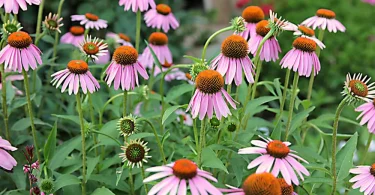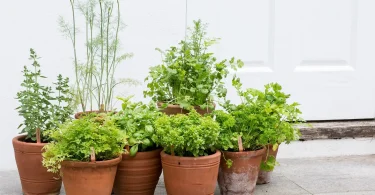The cypress vine (Ipomoea quamoclit), also known as cardinal climber or hummingbird vine, is a stunning annual vine prized for its delicate, fern-like foliage and vibrant, star-shaped flowers in shades of red, pink, or white. Native to Central and South America, this fast-growing plant is perfect for trellises, fences, or containers, adding a touch of tropical elegance to gardens. Propagating cypress vine is a simple and rewarding way to create a vibrant display of blooms that attract hummingbirds and butterflies. This guide will walk you through the steps to successfully propagate cypress vine, ensuring a flourishing garden showcase.
Why Propagate Cypress Vine?
Cypress vines are cherished for their rapid growth (up to 6–15 feet in a season) and profuse, trumpet-shaped flowers that bloom from summer to fall. They thrive in USDA zones 6–11 as annuals, or year-round in frost-free climates. Propagation allows you to expand your garden display, share plants with others, or save seeds for future seasons. Their low-maintenance nature and pollinator-attracting qualities make them ideal for gardeners seeking vibrant, wildlife-friendly plants.
Methods of Cypress Vine Propagation
Cypress vine is most commonly propagated through seeds, though stem cuttings can also be used. Below are detailed steps for each method.
1. Propagating via Seeds
- Sourcing Seeds: Collect seeds from mature cypress vine pods (small, dry capsules that form after flowers fade) or purchase from a reputable supplier. Seeds are small, black, and triangular.
- Preparing Seeds:
- Soak seeds in lukewarm water for 12–24 hours to soften the hard seed coat and improve germination.
- Optionally, nick the seed coat gently with a file or sandpaper (scarification) to speed up germination.
- Planting:
- Indoor Start: In zones 6–8, start seeds indoors 4–6 weeks before the last frost (March–April). Fill a seed tray with a well-draining seed-starting mix (equal parts potting soil, perlite, and sand).
- Outdoor Planting: In zones 9–11, sow directly in the garden after the last frost when soil temperatures reach 70°F.
- Sow seeds ¼ inch deep, 6–12 inches apart, in rows or near a trellis/fence.
- Water lightly to settle the soil.
- Germination: Place trays in a warm (70–80°F), sunny location with bright, indirect light. Keep soil moist but not soggy. Seeds typically germinate in 7–14 days.
- Transplanting: For indoor starts, transplant seedlings to the garden or larger pots when they have 2–3 true leaves and after the last frost. Harden off seedlings by gradually exposing them to outdoor conditions over 7–10 days.
2. Propagating via Stem Cuttings
- Choosing a Cutting: Select a healthy, non-flowering stem (4–6 inches long) with 2–3 nodes (where leaves attach) and vibrant leaves. Cut in late spring or early summer for best results.
- Preparing the Cutting:
- Use clean, sharp scissors to make a 45-degree cut just below a node.
- Remove lower leaves, leaving 2–3 leaves at the top to support photosynthesis.
- Rooting Options:
- Water Rooting:
- Place the cutting in a jar of filtered water, ensuring the node is submerged but leaves remain above water.
- Change water every 2–3 days to prevent stagnation.
- Place in bright, indirect light. Roots should form in 1–3 weeks.
- Soil Rooting:
- Dip the cut end in rooting hormone (optional) to encourage faster rooting.
- Plant the cutting 1–2 inches deep in a well-draining mix (equal parts potting soil, perlite, and sand).
- Water lightly and cover with a clear plastic bag to maintain humidity, leaving a small opening for air circulation.
- Place in bright, indirect light.
- Water Rooting:
- Transplanting: Once roots are 1–2 inches long (2–4 weeks), transfer water-rooted cuttings to soil or continue caring for soil-rooted cuttings as mature plants.
Step-by-Step Care for Propagated Cypress Vine
1. Select the Ideal Location
- Light: Provide full sun (6–8 hours daily) for optimal blooming. Cypress vines tolerate partial shade but may produce fewer flowers.
- Temperature: Maintain 65–85°F. Protect from frost (below 50°F), as cypress vine is frost-sensitive.
- Support: Install a trellis, fence, or string support at planting to guide the vine’s climbing growth.
2. Prepare the Soil
- Soil Type: Use well-draining, fertile soil with a pH of 6.0–7.0. Loamy or sandy loam soils are ideal.
- Amendments: Mix in compost or well-rotted manure to enrich the soil. For heavy clay soils, add sand or perlite to improve drainage.
- Drainage: Ensure the planting area drains well to prevent root rot. Raised beds are ideal for poorly draining soils.
3. Watering
- During Propagation: Keep soil consistently moist but not waterlogged for seeds and soil-rooted cuttings. Mist lightly every 2–3 days. For water-rooted cuttings, change water every 2–3 days.
- Established Plants: Water regularly (1 inch per week) to keep soil moist, especially during hot, dry periods. Reduce watering in cooler weather or once established, as cypress vines are moderately drought-tolerant.
- Technique: Water at the base to keep foliage dry and prevent fungal issues.
4. Fertilizing
- Frequency: Feed established plants with a balanced liquid fertilizer (e.g., 10-10-10) every 4–6 weeks during the growing season (spring to summer). Avoid over-fertilizing, which can lead to excessive foliage and fewer blooms.
- For Seedlings/Cuttings: Delay fertilizing until plants are established (4–6 weeks after rooting or transplanting).
5. Maintenance
- Training: Guide vines along supports to create desired shapes, such as covering a trellis or fence. Tie loosely with soft ties to avoid stem damage.
- Pruning: Trim dead or overly long stems to maintain shape and encourage bushier growth. Prune after flowering if needed.
- Pest Management: Monitor for aphids, spider mites, or whiteflies. Treat with insecticidal soap or neem oil and ensure good air circulation.
- Seed Collection: Harvest mature seed pods in fall for next season’s planting. Dry and store in a cool, dry place.
Common Challenges and Solutions
- Poor Germination: Hard seed coats or improper conditions. Soak and scarify seeds, ensure warm temperatures (70–80°F), and keep soil moist.
- Few or No Blooms: Insufficient light or excess nitrogen. Provide full sun and use a low-nitrogen, high-phosphorus fertilizer (e.g., 5-10-10).
- Pests: Aphids or spider mites may affect foliage. Treat with insecticidal soap or neem oil and remove affected leaves.
- Leggy Growth: Too much shade or over-fertilizing. Move to a sunnier location and reduce nitrogen-rich fertilizers.
Tips for Success
- Propagation Timing: Start seeds or cuttings in spring for best results, aligning with the growing season.
- Pollinator Attraction: Plant cypress vines near seating areas to enjoy hummingbirds and butterflies drawn to their nectar-rich flowers.
- Container Gardening: Grow in large pots (12–18 inches wide) with trellises for a portable, vibrant display.
- Zone Considerations: In zones 6–8, treat as an annual or start indoors to extend the season. In zones 9–11, it may self-seed or persist in frost-free areas.
- Companion Planting: Pair with zinnias, cosmos, or morning glories for a colorful, pollinator-friendly garden.
Fun Facts About Cypress Vine
- Hummingbird Magnet: Its star-shaped flowers are a favorite of hummingbirds, earning it the nickname “hummingbird vine.”
- Historical Use: Cypress vine has been grown in gardens since the 18th century for its ornamental beauty.
- Self-Seeding: In warm climates, it may self-seed, creating new plants the following season.
Troubleshooting Table
| Issue | Cause | Solution |
|---|---|---|
| Poor germination | Hard seed coat or cold soil | Soak/scarify seeds, ensure soil is 70°F+, keep moist. |
| Few or no blooms | Low light or excess nitrogen | Provide full sun, use high-phosphorus fertilizer (e.g., 5-10-10). |
| Pests | Aphids, spider mites, or whiteflies | Treat with insecticidal soap or neem oil; improve air circulation. |
| Leggy growth | Insufficient light or over-feeding | Move to full sun, reduce nitrogen-rich fertilizers. |
Conclusion
Propagating cypress vine is an easy and delightful way to grow this vibrant, pollinator-friendly plant. Whether using seeds or cuttings, you can create a stunning display of star-shaped flowers with minimal effort. By providing full sun, well-draining soil, and proper care, your cypress vine will thrive, adding tropical charm to your garden or containers. Start propagating this spring, and enjoy the dazzling beauty of cypress vine all season long!



